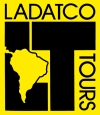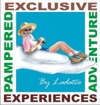

Destinations
Experiences
 |
L A
D A T C O T O U R
S |
 |
||||||||
| HOME | South America | Falkland Islands | Antarctica | Unique Destinations |
Unique Experiences |
Newsstand | ||||
| Quito Museums |
Museums of QuitoThe House of Urrutia
The house/museum of María Augusta Urrutia is located in the colonial section of Quito, and was built at the beginning of the 20th century, and is an excellent example of the arquitecture of this period, a typical style with inside patios, corridors and many rooms.Mrs. Urrutia, came from a very wealthy family and was born in Quito in 1901. She spent her childhood and adolescent years in Europe, where she developed a taste for French decoration and the art of the great masters. The house is furnished with a collection of Ecuadorian art from the Colonial times to the 20th century: apart of the paintings and other works of art, you can see, together the local large bronze pots beside fine French porcelain and silver dinnerware.
Mrs. Urrutia’s husband, Alfredo Escudero, died a few years after the marriage. Mrs. Urrutia dressed in black for the rest of her life, until her death in 1987. She kept the house exactly as it had been at the time of her husband’s death, and as she was very religious, puts all her efforts and wealth to help the poor, specially the children, and to patronize very good Ecuadorian painters, like Mideros, whose mystic and esoteric type paintings, of great format and much use of bright blue, adorn the house. The House of Urrutia is an encounter with the time, the spirit and the daily life of Quito at the beginning of the 20th Century.
The Museum of the City
The Museum of the City of Quito (Museo de la Ciudad) opened in July, 1998, in the former Hospital of Mercy of our Lord Jesus Christ in the Old City. The historic building was used as a hospital from 1565 to 1974. In the 16th century the hospital provided lodging for the sick awaiting death and also for travelers. After the Bethlemite Brothers acquired the hospital around 1700, they added a doctor, chaplain, church, drugstore, vegetable garden and two fountains with fresh water. The brothers also built the richly decorated chapel, which has nine splendidly carved altars representative of the Quito School of Art. The first Ecuadorian doctor, Eugenio de Santa Cruz y Espejo, was born in the hospital in 1747 and later practiced there. A Faculty of Medicine and a lecture theater were added in 1826. French scientists came to teach at the hospital in 1872.
The Museo de la Ciudad shows Quito's history in chronological order from 10,000 BC to today. The city is presented as a center of exchange and of multicultural encounters, as a political and administrative center, and as the departure point for expeditions that discovered and explored the
Amazon. Many exhibits, which include dioramas and lifesize replicas, focus on the changes in daily life through the centuries. The first rooms show the area's prehistoric inhabitants and Indian communities that preceded the arrival of the Incas in 1487. The other exhibitions are organized by century. The original hospital is recreated with a ward containing beds, where the sick awaited death on boards covered with hayThe 16th-century Room includes a map of Quito made of inlaid wood, a lifesize Indian hut, a drawing of Plaza San Francisco as the city market, helmets and armor of Spanish conquistadors, and the orders of priests that came to Quito. The prosperous 17th century is depicted by the manufactoring and trade in textiles, the studio of Miguel de Santiago of the Quito School of Art, and houses with bakery and candle shops.
Rooms of the 18th century feature French and German scientists who studied the exact location of the Equator in the Andes and the area's flora and fauna, period dresses, the rigid class system, a typical kitchen and a room where women sat in Arab fashion on rugs and pillows to chat, sew, embroider or smoke. The 19th-century Room shows the influence of the French, the struggle for independence from Spain and scenes of everyday life.
Recoleta de San Diego
San Diego, House of Retreat
The Franciscan Order is linked to Quito from the time of the foundation of the city, which, by the end of the 16th Century already had a solid urban structure and an important part of the religious buildings: churches, cloisters and monasteries with hundreds of altars, altarpieces and facades, which required a wealth of artists and capable craftsmen who studied from 1550 in the schools of San Juan Evangelista and the most known of San Andrés - where the famous School of art of Quito was born (Quitenian Baroque). These schools were run by the Franciscans.The devoted parishioners who filled these places of devotion, also demanded the possibility of doing retreat exercises in places separate from the urban noise. Thus, the house of retreat or the "Recoleta de San Diego" was built, located between deep ravines on the slopes of the Pichincha mountain, in the outskirts of the city, and quickly became a renowned center for retreat for monks and laymen alike.
Construction was started in 1600 in care of Father Bartolomé Rubio. The construction includes a cloister of two patios, refectory, sacristy, cells orchards. It has a humble facade that extends in front an ample patio, similar to a small plaza, in the center of which stands an imposing stone cross. The main door has a cutoff cornice set in a high arch with a square window at the top, and a sober atrium of pillars ending in pyramidal spires. The original main door is now inside, to protect it from the elements. The walls of the cloisters show windows of all sizes, created at liberty according to the requirements of light of the retreat cells.
In its interior the church unites the simplicity of its whitewashed walls to the serene elegance of the craftsmanship of the presbyter in cedar wood in the mudéjar style (Moorish), it has floors of stone; the pulpit and altarpieces of The Candelaria (virgin of) and the much revered Virgin of Chiquinquirá by Menacho an Indian sculptor, are marvelous works of art.
During the last couple of years, an intense work of restoration has redeemed the church, the cloisters, the pictorial and sculptural works of art, the altarpieces and the caissoned ceilings. Fragments of murals of the 17th Century, later whitewashed with lime, have been found during the restoration works.
The local mythology has legends, such as that of the light and carefree Father Almeida, who used to escape from San Diego on nightly nocturnal adventures, by climbing up a large statue of Christ to reach the window, until the night the statue said to him: "Until when, Father Almeida" to receive the answer that most agreed with his double life of priest and night owl: "Until my return, my Lord".
The Cathedral
Located on the Main Square has an interesting collection of sculptures and paintings from the Escuela Quiteña. Among the most important is the Descending of Christ made by Caspicara. As in most Ecuadorian and Latin American churches, many styles are used in the construction of the Cathedral, such as late Gothic in the arches Moorish in the ceilings and Baroque in the main altar. See the Neoclassic style in the choir, the stone Episcopal chair, the central painting by Manuel Samaniego and the Statues by Caspicara.San Francisco Church
It was constructed after the Spanish Conquest and is said to have given the capital of Ecuador the name of San Francisco de Quito. The atrium running along one side of the plaza is opened in the middle to give way to a beautiful staircase. The facade has a style similar to the Escorial in Spain and in the inside the Baroque style. The coffer ceiling in the marthex has a rich Moorish style ornamentation with paintings by Miguel de Santiago. It is interesting to note among the ornamentations images of the sun god, the Inca divinity. The main altar holds the original masterpiece by Legards: "La Virgen de Quito". This sculpure is the only winged image of the Virgin Mary.Cantuña Chapel
According to the legend of this Chapel, Francisco Cantuña, the indian who paved the atrium with large stone block, constructed the chapel with the treasures saved from the Kingdom of Quito. The Calvary woodcarvings on the main altar are one of Legarda’s most outstanding masterpieces of the colonial times. At this Chapel, another masterpiece to look at, carved by Padre Carlos, is Saint Peter of Alcántara.San Francisco Museum
Located at the San francisco Convent, in San Francisco Square. The zaguan (antique entrance hall), the main cloister, the renacentist stair way, the chorus and the exposition lounge are now the site of a number of selected works of the Franciscan collection. You can find works of Andrés Sánchez Galque (of indigenous origin), Miguel de Santiago, Mateo mexía, the European authors Zurbarán and Bernardo de Bitti, or their repective schools, among others. In the third lounge you can find samples of the European engravings that inspired native painters. Among the sculptures, you can find the glass eyes characteristic of the XVIII centuryCentral Bank Museum
Located at the Casa de la Cultura (6 de Diciembre and Patria Avenues). Visiting hours: Tuesday-Friday from 09h00 to 17h00; weekends and holidays from 10h00 to 15h00.Phone: 223 258. Pre - Colonial, Colonial and Contemporary Art. See 1417 pieces exhibited permanently, in itinerary and temporal displace and learn about our origin, evolution and history.
Entrance fee: US$. 2.00. Students: US$. 1.00. Guide service available.
City Council Art and History
Alberto Mena Caamaño Museum
Located at Espejo St. 1147 at the main square. Opened Tuesday to Saturday from 9h00 - 16h30.Admission free. Guide service at no cost. The attractive building in which the museum operates belonged to the Jesuits until 1767 when Charles III of Spain banished the Jesuit Order from the colonized territories. Later it became the army headquarters of the Spain Royal troops sent from Lima to oppress the early independence effort. This is why the building was known as the Royal Barrack of Lima (El Cuartel Real de Lima).
National Museum of Colonial Art
Located at Cuenca and Mejía St. Guide service available. This museum operates in a XVII century home of the Marquis of Villacis. The patio has an attractive fountain and garden and the corridors and halls display a collection of paintings and sculptures of the time. Bargueños, antique bureaus used to store documents and money, are an interesting exhibit here.